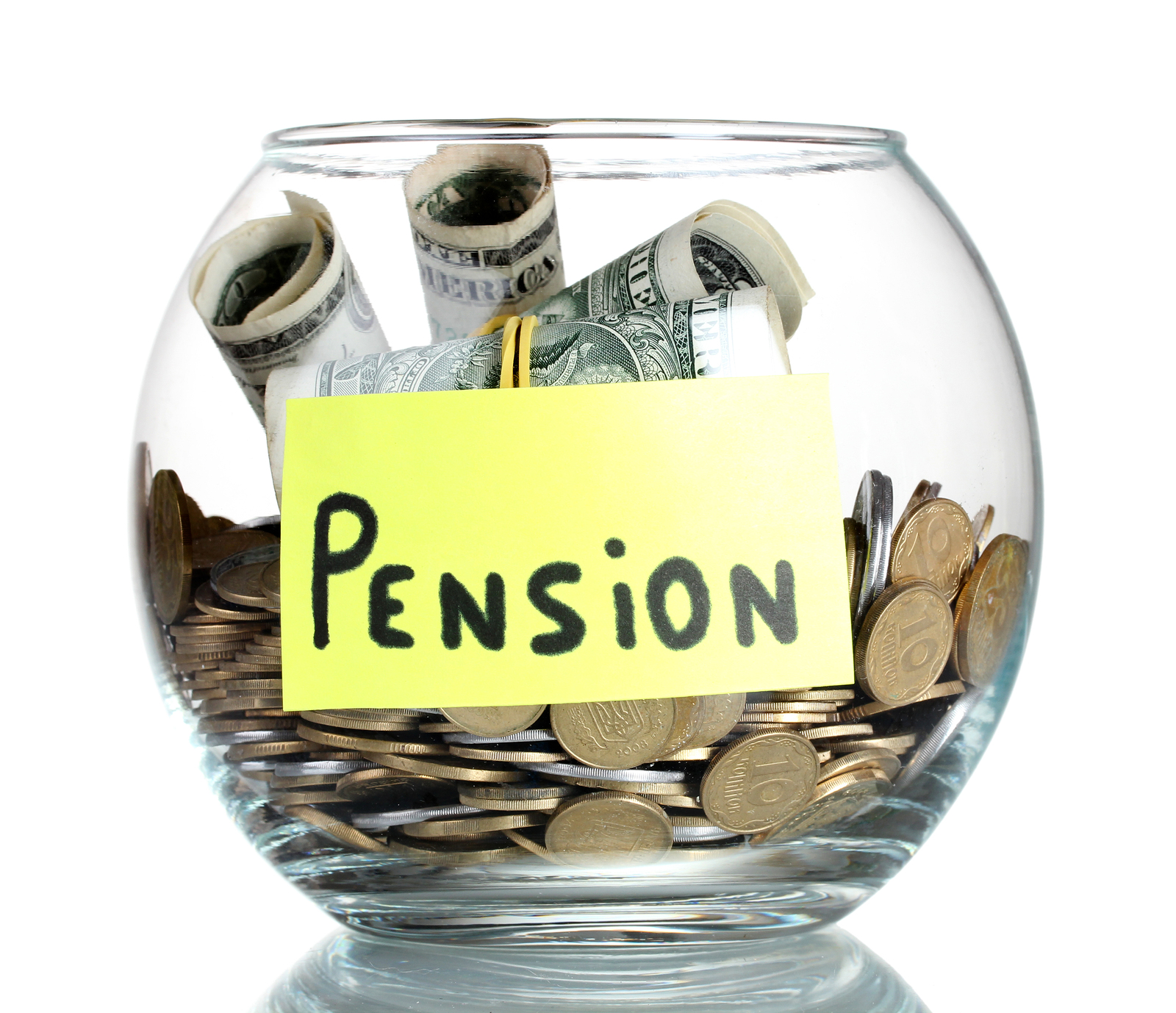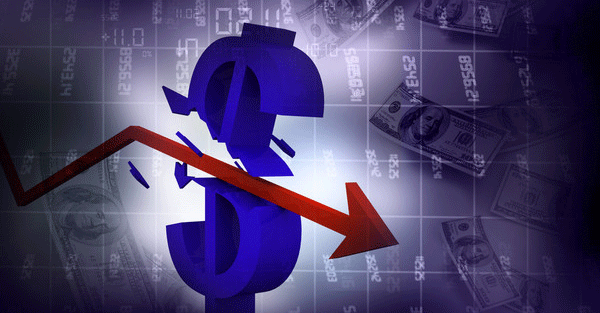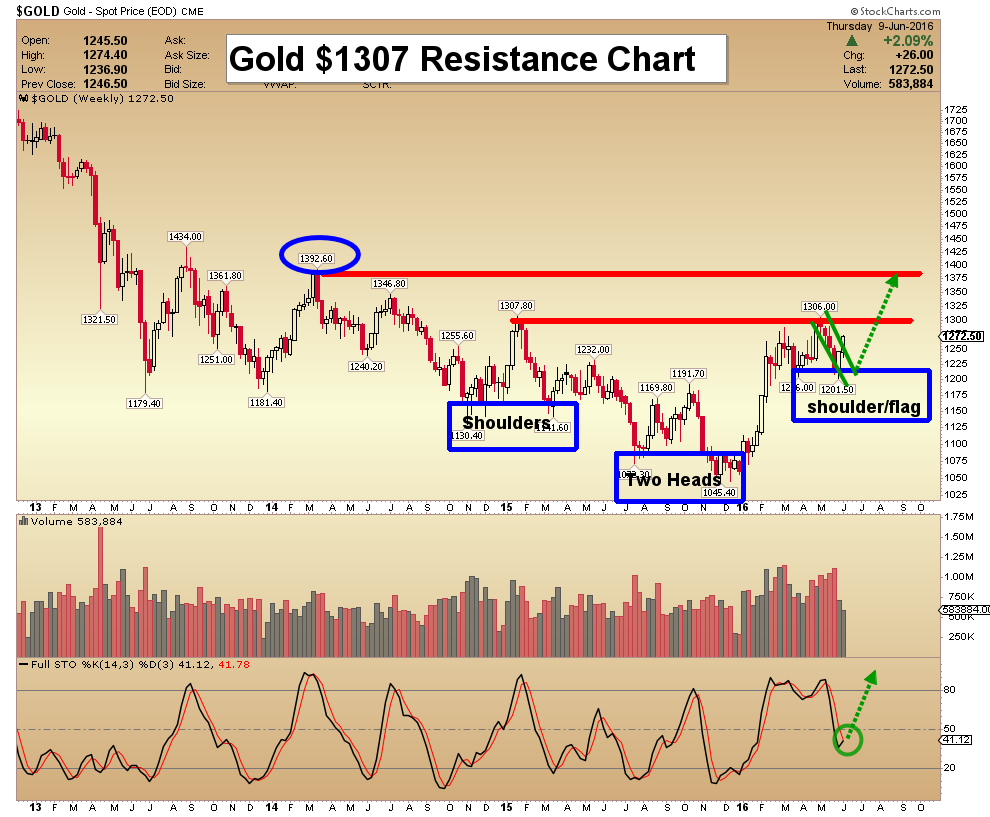Gold & Precious Metals

 Don’t gamble; take all your savings and buy some good stock and hold
Don’t gamble; take all your savings and buy some good stock and holdit till it goes up, then sell it. If it don’t go up, don’t buy it.” – Will Rogers
Last week, we got a terrible, lousy, awful jobs report, and that was a good thing. Not for workers, of course, but it’s a good thing for investors because it most likely put the kibosh on the Federal Reserve’s wrong-headed plan to hike interest rates next week.
Janet Yellen and her friends on the Fed had been dropping strong hints to anyone and everyone that the Fed wants to raise rates, and they want to do it soon. As I explained last week, raising rates now is a bad idea, which, unfortunately, isn’t a reason for the Fed not to do it. But then the May jobs reports came along and said that only 38,000 net new jobs were created last month. That was less than one-fourth of expectations! Yet, the bad news may have saved us. Hopefully, some folks inside the Fed are reconsidering their plans.
In this week’s CWS Market Review, I’ll explain what the market’s shakeout means for us. Every investor needs to understand that the stock market has shifted toward long-neglected economically cyclical stocks. Later on, I’ll highlight some good news from our Buy List. As expected, CR Bard raised its dividend for the 45th year in a row. There aren’t many stocks that can say that. CR Bard is now a 20% winner for us this year. Before we get to that, though, let’s take a closer look at the latest hijinks on a certain street in lower Manhattan.
The Big Chill Comes to Wall Street
The stock market has been unusually happy lately, despite many reasons to be fearful. On May 19, the S&P 500 closed at 2,040.04, which made the index just slightly red for the year. That must have been the signal the bulls had been waiting for, because the S&P 500 has gradually marched higher ever since.
On Wednesday, the S&P 500 closed at 2,119.12 for its highest close since last July. In fact, we’re inching ever closer to 2,130, which is the all-time closing high reached a little over one year ago. But don’t forget dividends! Looking at the S&P 500 Total Return Index, which includes dividends, we’re already at a new all-time high.
What’s interesting about this recent rally is how gradual it’s been. There really haven’t been major upsurges. In fact, the S&P 500 has gone a full nine weeks without a single day of losing more than 1%. That ain’t how this year started. Take a guess how many days had 1% drops during the first nine weeks of this year? I’ll give you a hint—the answer is 14.
It’s not just the subdued nature of the really; I’ve also been struck by its content. I touched on this subject last week, but it’s worth exploring in a little more detail. Since February, the stock market has been led by economically cyclical stocks. These are the types of businesses whose fortunes are closely tied to the economic cycle. Think construction, transportation, manufacturing, chemicals, etc. It’s been a long time since cyclical stocks were popular.
Investors need to understand that a cyclical stock isn’t in any fundamental sense better or worse than a defensive stock. To every thing, there is a season, and cyclical stocks tend to move in, well…cycles. Since February, the market has rewarded cyclicals.
Defensive sectors are areas like consumer staples and healthcare. When I say cyclical stock, I generally mean three sectors—energy, materials and industrials. The first two are largely impacted by commodity prices, and the rebound in oil has been quite remarkable. This week, oil broke $50 per share. Black gold has nearly doubled off its February low. I’m not optimistic on the long-term outlook for oil. (Don’t take my word for it: check out the dumpster fire that used to call itself OPEC.) But I wouldn’t be too confident to call for a top in oil.
Not surprisingly, energy stocks have been some of the top performers this year. ExxonMobil, for example, is up nearly 20% this year, while 3M, your classic industrial, is up nearly 15%. These stocks had been laggards for so long.
Our Buy List, as a whole, is slightly weighted against the cyclical sectors. That’s not a macro call on my part. It’s just how things worked out. It’s nearly impossible to be completely neutral in all sectors. Just about any portfolio is going to lean toward to some sectors, but our minor defensive bias is impacting our performance this year. The effect isn’t dramatic, but it’s clearly at work.
Before their sudden burst of popularity, the energy and materials sectors had been lagging the overall market for five years. In fact, that preceded the meltdown in commodity prices. It also could have reflected a growing realization that the current recovery is unusually subdued. Whatever the reason, these cycles constantly flow within the markets, and it’s important to understand why.
The popularity of cyclical stocks may also suggest that the economy is doing better than people realize. The latest forecast from the Atlanta Fed sees Q2 GDP coming in at 2.5%. We’ll get our first look at Q2 GDP in late July. In one more month, second-quarter earnings season starts, and we’ll get a look at how well Corporate America did during the spring. This very likely will break our six-quarter streak of falling operating earnings.
According to S&P, Wall Street expects the S&P 500 to report earnings of $28.43 (that’s the index-adjusted number). That would be an increase of 8.8% over last year’s Q2. However, the forecast for Q2 has been pared back by 8.3% since the start of the year. Analysts usually start out with high forecasts and then cut them as earnings day gets closer. It will be very nice to put this “earnings recession” behind us.
Now let’s circle back to the jobs report. On Friday, the Labor Department said that only 38,000 net new jobs were created last month. Wall Street had been expecting 162,000. This wasn’t just a miss—it was an historic facepalm! This was the worst jobs report in more than five years.
Going into the jobs report, the futures market put the odds of a June rate hike from the Fed at 30%. Now that’s down to 3.8%, which is probably 3.79999% too high. Still, the Fed is talking tough. It’s hard for me to see the need for a rate hike, since GDP growth is pretty sluggish, and there’s not much in the way of inflation.
After the jobs report came out, there was a pronounced shift within interest rate-sensitive stocks. Areas with high-dividend yields, like utilities, gapped up, while banks and other financials took a hit. Gold had one of its best days in weeks, and the U.S. dollar suffered its worst drop all year.
I’m still concerned about inflation, but so far, the evidence just isn’t there. If that changes, then I think the Fed would be justified in raising interest rates. But it wouldn’t take much from the Fed to flatten out the yield curves since long-term rates are so low. In fact, the bond market rallied and has continued to rally. The 10-year yield just closed at 1.68%, which is a four-month low, and it’s very close to being the lowest level in more than three years.
Meanwhile, Mario Draghi at the ECB has started buying corporate bonds. The European economy is still a mess, and the authorities there are pulling out all the stops. Bond yields in the Old World are falling to microscopic levels. In Germany, the 10-year yield is getting very close to 0%. Switzerland said it plans to issue a 13-year bond with a coupon of 0%. In the U.K., their 10-year bond fell below 1.25%, which is a record low. Now there are reports of foreign investors buying up U.S. junk debt. There’s simply no other place to go.
If you had decided to sit out stocks this year and plant your money in long-term Treasuries, you’d be enjoying a nice lead over the S&P 500. But going forward, I think the stock market is much safer. The S&P 500, as a whole, now yields about 50 basis points more than the 10-year Treasury. And don’t forget an important fact about fixed income: the income is fixed. That’s not the case with equities, which can raise their dividends. Speaking of which, let’s turn to this week’s news from CR Bard.
CR Bard Raises Its Dividend for the 45th Year in a Row
On Wednesday, CR Bard (BCR) announced that it’s raising its quarterly dividend from 24 to 26 cents per share. (In last week’s issue, I predicted 27 cents.) This is the 45th consecutive year in which Bard has raised its dividend. There are only a handful of publicly traded stocks that can boast track records like that.
The company said that the dividend is payable on July 29 to shareholders of record at the close of business on July 18. Bard only pays out a modest portion of its profits as dividends. For the average stock in the S&P 500, the average payout usually runs around 33%. For Bard, it’s less than 10%. Going by Thursday’s closing price, Bard now yields 0.31%. That’s puny, but Bard can easily afford to keep raising its dividend for many years to come.
The company also announced a new $500 million share-repurchase authorization. This is on top of the current program, which has $205 million left in it. Shares of BCR are up 20% for us this year. This week, I’m lifting my Buy Below on CR Bard to $231 per share.
Biogen Drops 12.8% after MS Study
One of my favorite biotech stocks, Biogen (BIIB), got dinged hard this week after the company said that Opicinumab, one of its experimental drugs related to multiple sclerosis, had performed poorly during mid-stage tests. There’s been a worry on Wall Street that Biogen has a thin pipeline, and this news didn’t help. The stock dropped 12.8% on Tuesday. This is especially unfortunate because the stock had been trending higher.
Opicinumab isn’t dead yet, but the drug needs more time for trials. Biogen wasn’t in any sense staking its future on Opicinumab, but it’s not a pleasant setback. If you recall, Biogen said it’s going to focus on its neurology business, and they plan to spin off their hemophilia drugs.
While this week’s news is unfortunate for Biogen, but they still have a lot going for them. Let’s remember that the last few earnings reports have easily beaten expectations. The lower share price also means the stock is going for less than 13 times next year’s earnings estimate. Plus, we have the possible spinoff coming later this year, or in early 2017. Don’t be scared out of Biogen. The company has a bright future.
That’s all for now. Next week is the big Fed meeting. The FOMC gets together on Tuesday and Wednesday. The policy statement will come out at 2 p.m. on Wednesday, which will be followed by a press conference from Fed Chairwoman Janet Yellen. The Fed members will also update their economic projections (the “blue dots”). I’m not expecting any change in rates, but market watchers will pore over every letter in the statement, looking for clues. Be sure to keep checking the blog for daily updates. I’ll have more market analysis for you in the next issue of CWS Market Review!
– Eddy
Named by CNN/Money as the best buy-and-hold blogger, Eddy Elfenbein is the editor of Crossing Wall Street. His free Buy List has beaten the S&P 500 eight times in the last nine years. This email was sent by Eddy Elfenbein through Crossing Wall Street.

 Experts worry about stock, bond and real estate market excesses. But a bubble is forming that dwarfs them all: in pension plans. Millions of Americans and Canadians who are counting on pension benefits to fund their retirements risk being severely disappointed.
Experts worry about stock, bond and real estate market excesses. But a bubble is forming that dwarfs them all: in pension plans. Millions of Americans and Canadians who are counting on pension benefits to fund their retirements risk being severely disappointed.
The hard money community has, of course, been aware of this for some time. However in recent years, even the elites have been taking notice.
One such group, the International Forum of the America’s will be holding its fourth annual pension conference in Montreal next Monday.
There politicians, financiers and monetary policy officials, will discuss the declining rates of return in public and private sector pension plans.
The picture they will paint is increasingly grim.
Pension funds, which have been issuing over-optimistic revenue forecasts for years, aren’t going to earn nearly enough money to pay the benefits recipients expect.
Much of this relates to secular stagnation in the economy.
Bonds, which from a major part of most plans’ holdings earn next to nothing in interest.
Stocks, which are trading at record levels, despite falling corporate earnings, look to have more downside risk than upside potential.
Worse, if bond returns average 2%, balanced portfolios projecting 7% to 8% annual returns, have to earn 12% to 14% on equities investments to make up the difference. That’s unlikely to happen.
At least private sector plans have some money in them – public sector plans are in even in worse shape.
Governments have almost nothing put aside to fund future retirees – and they don’t even fully list their debts.
That process of “cooking the books” ramped up in a major way during Bill Clinton’s administration, whom Hillary Clinton, the current Democratic Presidential nominee has promised to “put in charge of the economy.”
The upshot is that most Americans and Canadians have no clue how far in debt their countries are. Researchers such as Laurence Kotlikoff , a professor at Boston University, suggest that unfunded pension and other liabilities run into the tens of trillions of dollars in the United States. The Fraser Institute has shown that Canada isn’t much better.
Backing off commitments
Ironically, the biggest challenge facing government bureaucrats and private fund administrators has nothing to do with paying back pensioners. They have known for some time that would not be possible.
Their key challenge, will be to ensure that shortfalls occur on someone else’s watch.
As such, these defaults will occur at a gradual pace. The first stages, already well under way, include steps such as raising eligibility requirements, increasing the tax burden on “wealthier” recipients and so on.
Congress, which teamed up to cut benefits during the Reagan administration, has been trying to find a way to do it a second time. Once the November elections are over they will likely give it another shot.
A likely model will be Canada, where, in 2012, the late Jim Flaherty, a political master, camouflaged the Harper Government’s raising the eligibility requirements for Old Age Security from 65 to 67, by delaying implementation for ten years.
Flaherty further deflected media attention from the default by simultaneously banning the penny. Canadian journalists, fell for the bait and spent the next week writing stories about the pennies, never for a second realizing that Flaherty had slipped one by them.
House prices up 12%, food prices 3.7%. Pensions up 1.3%.
Another tactic used by government officials and pension fund managers to avoid paying out pensioners, is to inflate away the problem. As John Maynard Keynes, the great economist, noted: inflation is an excellent way to extract wealth, because not one man in a hundred will understand how it was done.
Here is how it works: governments promise pensioners that their benefits will be indexed to protect beneficiaries against rising prices. But they then use selected or massaged statistics to back out.
In Canada, federal (CPP) pension plan recipients will see their benefits rise by 1.3% during 2016. But food prices, according to Statistics Canada rose by 3.7% last year. House prices rose by 12% up to December 2015 according to the Canadian Real Estate Association.
The controversial John Williams of Shadow Statistics provides credible research about how the data massaging works in the United States.
The effects of prices rising faster than benefits, over time, can be dramatic. If prices rise by 2% faster than pensions each year, then by the 20th year of retirement, beneficiaries will be losing 40% of their purchasing power (I am calculating using a straight line basis for simplicity).
In short, most pensioners won’t have a clue what hit them.
Outright defaults
Seniors vote – and there are a lot of them. So outright defaults on pension obligations will be a last resort of politicians and private sector plan managers.
However, it is starting to happen.
The ongoing saga of the US Central States Pension Fund, whose 400,000 beneficiaries were recently offered cuts of up to 60% in the amounts they receive, provides an excellent warning.
Amazingly the Central States Pension Fund, which manages funds for retirees from a number of companies in 37 states, actually has $18 billion in funds. Managers from those companies simply over-promised workers how much money they would get.
Pensioners in a variety of public plans including Detroit’s – which went bankrupt – and Illinois – which is insolvent – haven’t been much luckier. Many more will suffer the same fate.
Governments still have some time to manage the fallout. So do taxpayers who are counting on those plans to fund their retirements.
For them, the time to plan is now.

 Two thirds of the families in the US are now invested in the stock market compared to three percent in the great crash of 1929. When the economic crash comes, retirement accounts, mutual funds and most paper wealth will be wiped out. Most people making a living on the service sector of our economy will be unemployed. Prices on everything made in this country will either deflate or paper money will lose most of its value. The resultant depression will affect everyone and it will be the worst that this nation has ever known.
Two thirds of the families in the US are now invested in the stock market compared to three percent in the great crash of 1929. When the economic crash comes, retirement accounts, mutual funds and most paper wealth will be wiped out. Most people making a living on the service sector of our economy will be unemployed. Prices on everything made in this country will either deflate or paper money will lose most of its value. The resultant depression will affect everyone and it will be the worst that this nation has ever known.

 ‘The biggest subprime bubble of all is the negative interest loans being made to sovereign governments.
‘The biggest subprime bubble of all is the negative interest loans being made to sovereign governments.
All over the world now there are governments that are issuing sovereign bonds with negative yields… and many of these governments are totally bankrupt”
On July 1, 2005, the Chairman of then President George W. Bush’s Council of Economic Advisors told a reporter from CNBC that,
“We’ve never had a decline in house prices on a nationwide basis. So, what I think is more likely is that house prices will slow, maybe stabilize, might slow consumption spending a bit. I don’t think it’s gonna drive the economy too far from its full employment path, though.”
His name was Ben Bernanke. And within a year he would become Chairman of the Federal Reserve.
Of course, we now know that he was dead wrong.
The housing market crashed and dragged the US economy with it. And Bernanke spent his entire tenure as Fed chairman dealing with the consequences.
One of the chief culprits of this debacle was the collapse of the sub-prime bubble.
Banks had spent years making sweetheart home loans to just about anyone who wanted to borrow, including high risk ‘sub-prime’ borrowers who were often insolvent and had little prospect of honoring the terms of the loan.
When the bubble got into full swing, lending practices were so out of control that banks routinely offered no-money-down mortgages to subprime borrowers.
The deals got even sweeter, with banks making 102% and even 105% loans.
In other words, they would loan the entire purchase price of a home plus closing costs, and then kick in a little bit extra for the borrower to put in his/her pocket.
So basically these subprime home buyers were getting paid to borrow money.
Of course, we know how that all turned out. By 2008 the entire system crashed, and the post-game analysis had some pretty obvious conclusions:
Bad things tend to happen when you pay people to borrow money, especially when they’re not particularly creditworthy.
Thank goodness no one in finance engages in such risky behavior anymore!
Or do they?
Today, subprime is back.
There’s been a lot of talk lately about a growing bubble in the subprime auto loan market, and even student loans.
But the biggest subprime bubble of all is the negative interest loans being made to sovereign governments.
All over the world now there are governments that are issuing sovereign bonds with negative yields… and many of these governments are totally bankrupt.
Japan, with its debt level at more than 220% of GDP, is the latest entrant into the world of negative interest bonds.
Japan’s debt is so high, in fact, that it takes 41% of government tax revenue to service.
Even in Italy, one of Europe’s most notoriously and hopelessly bankrupt countries, the government bonds have negative yields.
‘Negative yield’ means that an investor who loans money to government will get back less money than s/he invested once the bond matures.
In other words, the government is getting paid to borrow money.
So it’s not much different than when banks paid subprime homeowners to borrow money ten years ago based on a misguided premise that home prices always go up.
Now they’re just paying subprime governments to borrow based on a misguided premise that governments will ALWAYS pay. (Just like Greece!)
The key difference is size. At the peak of the housing bubble ten years ago, there was about $1.3 trillion worth of subprime mortgages in the financial system.
That $1.3 trillion bubble was enough to bring down several major banks and cause cascading damage across the global financial system.
Today’s bubble is EIGHT TIMES the size of the last one, with more than $10.4 trillion worth of government bonds that yield negative interest.
And what’s even more concerning is how quickly it’s growing.
In January 2016, the total amount of government bonds in the world with negative interest totaled $5.5 trillion.
One month later in February the total had grown to $7 trillion. By May it was $9.9 trillion. And today it’s $10.4 trillion.
So this gigantic sovereign bond bubble where governments are being paid to borrow money has practically doubled just in the last several months.
This isn’t a cause for panic or to assume that the financial system is going to crash tomorrow.
But it’s clearly a disturbing trend… the proverbial powder keg in search of a match.
And when future pundits write the history of the financial crisis to come, whether it happens today, tomorrow, or years from now, you can bet they’ll wonder how the entire system failed once again to see something so dangerous… and so obvious.
Simon Black
Founder, SovereignMan.com
related:
John Mauldin’s take on how to handle the situation described above: Your Portfolio Design: Assume the Fetal Position













